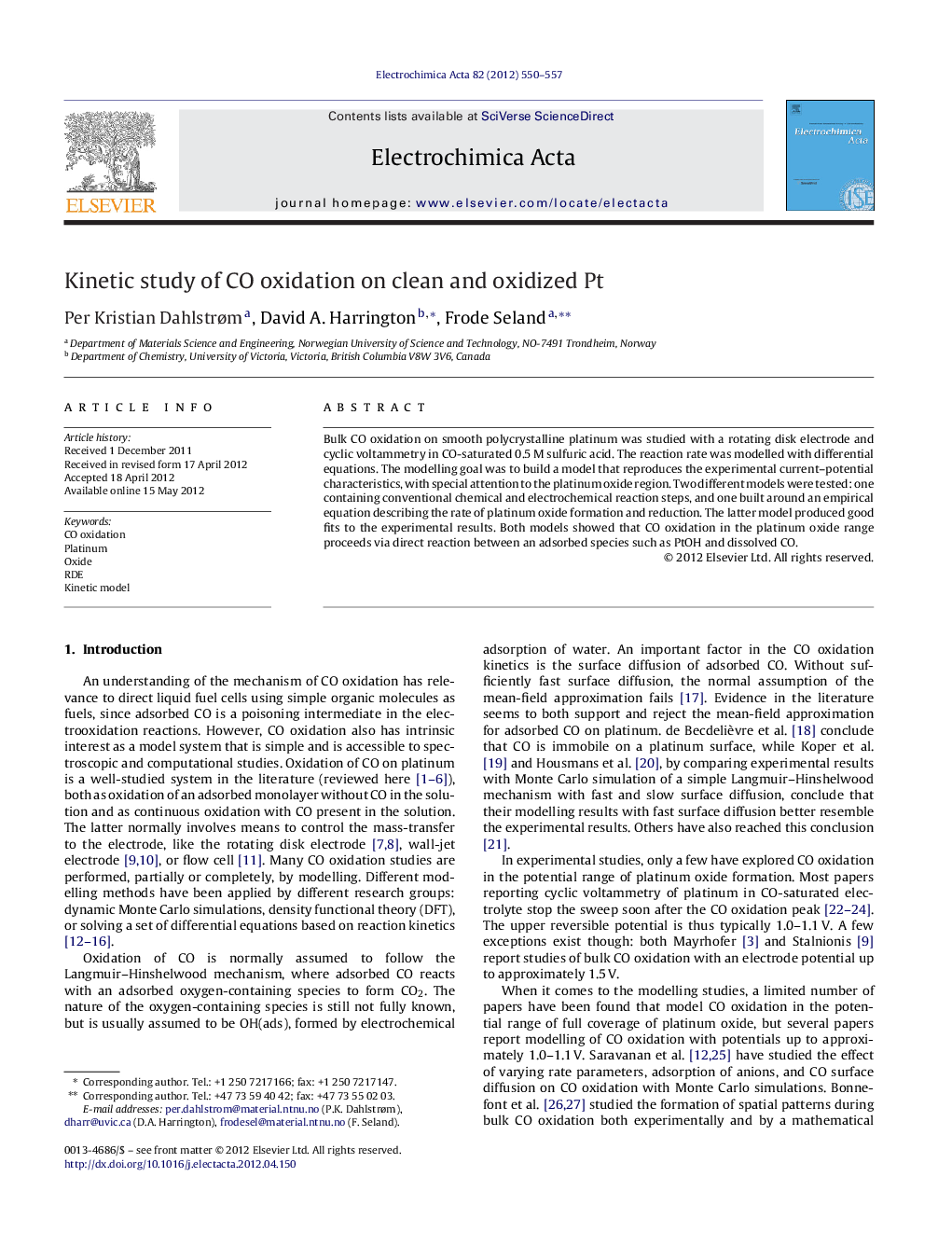| Article ID | Journal | Published Year | Pages | File Type |
|---|---|---|---|---|
| 6618386 | Electrochimica Acta | 2012 | 8 Pages |
Abstract
Bulk CO oxidation on smooth polycrystalline platinum was studied with a rotating disk electrode and cyclic voltammetry in CO-saturated 0.5Â M sulfuric acid. The reaction rate was modelled with differential equations. The modelling goal was to build a model that reproduces the experimental current-potential characteristics, with special attention to the platinum oxide region. Two different models were tested: one containing conventional chemical and electrochemical reaction steps, and one built around an empirical equation describing the rate of platinum oxide formation and reduction. The latter model produced good fits to the experimental results. Both models showed that CO oxidation in the platinum oxide range proceeds via direct reaction between an adsorbed species such as PtOH and dissolved CO.
Related Topics
Physical Sciences and Engineering
Chemical Engineering
Chemical Engineering (General)
Authors
Per Kristian Dahlstrøm, David A. Harrington, Frode Seland,
